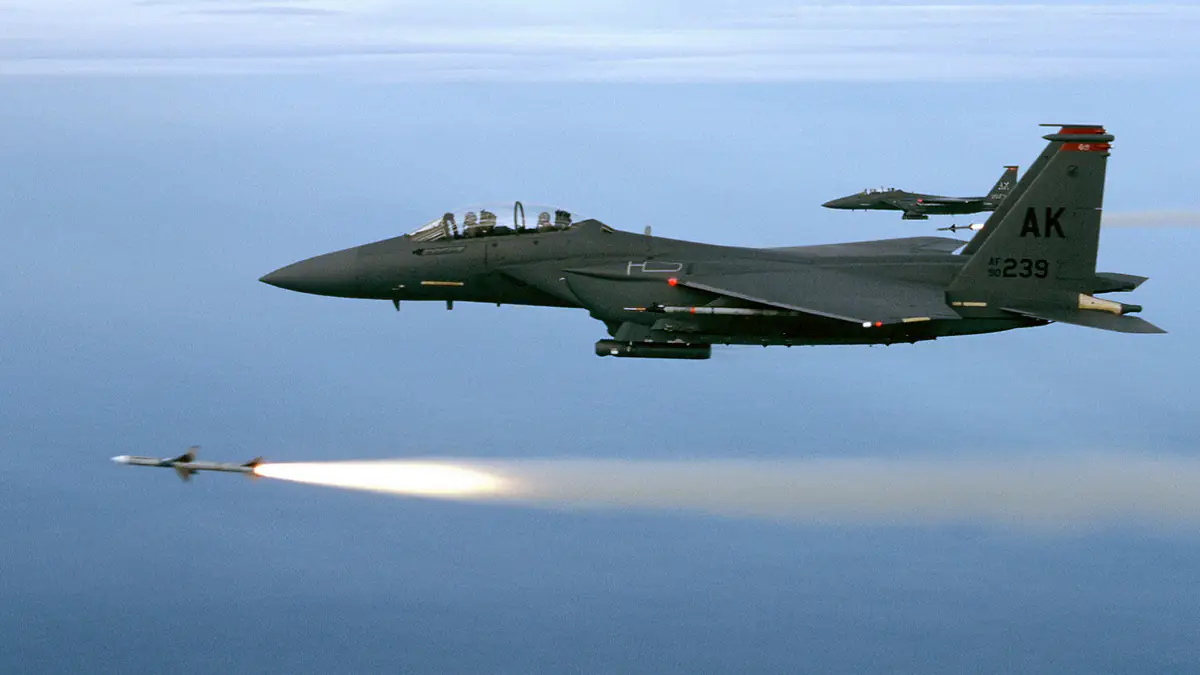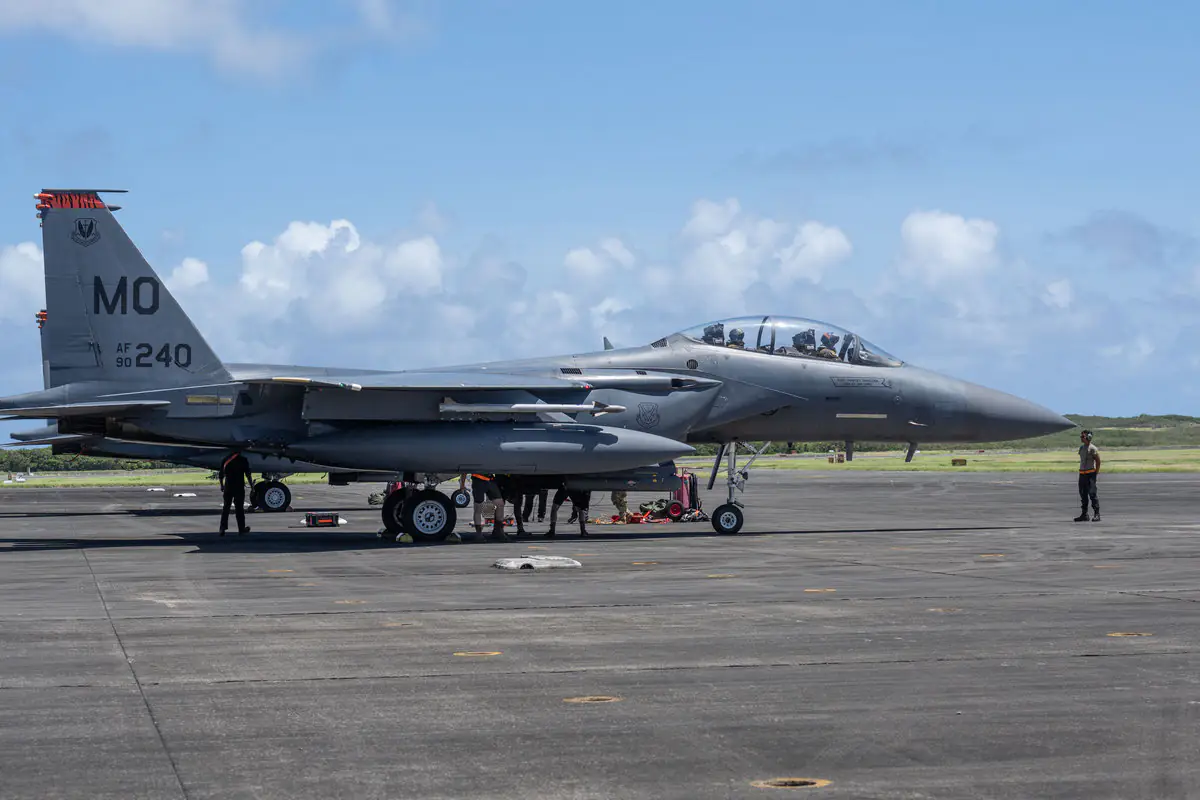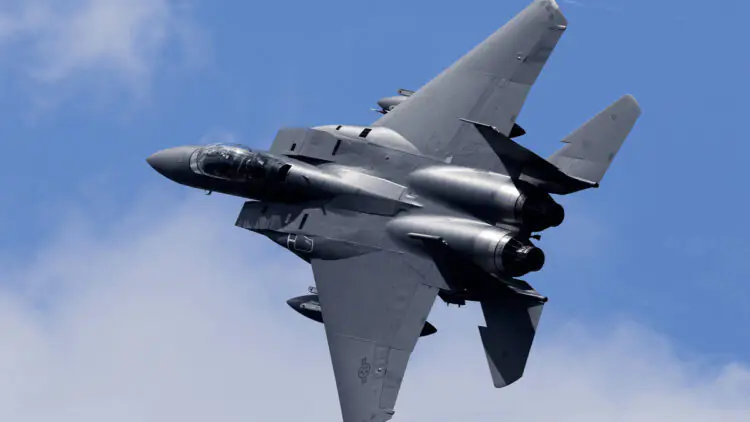The U.S. Air Force’s F-15E Strike Eagle has received a new weapons loadout – up to 42 APKWS II precision-guided rockets. This upgrade enhances the jet’s ability to engage drones and cruise missiles, effectively turning it into a “missile truck” with expanded air defense capabilities.
According to The War Zone, an F-15E from the USAF’s 96th Test Wing was recently spotted carrying six launch pods, each loaded with seven 70mm guided rockets – bringing the total to 42. When combined with its standard air-to-air missile loadout, this configuration significantly boosts the aircraft’s effectiveness against low-altitude aerial threats.

Traditional air-to-air missiles, while powerful, are expensive and limited in number. In conflicts involving mass deployment of drones and loitering munitions, there’s a growing need for a larger volume of lower-cost weapons – and that’s where the APKWS II (Advanced Precision Kill Weapon System II), also known as the AGR-20, comes into play.
Developed in the early 2000s, this system converts standard unguided Hydra 70 rockets into precision-guided munitions by integrating a guidance module. It’s produced by a consortium that includes BAE Systems, Northrop Grumman, and General Dynamics. Most of the rocket’s original components – such as the motor, warhead, and fuse – remain unchanged. However, the addition of a laser guidance section dramatically improves accuracy. This approach significantly reduces the cost per shot and helps minimize collateral damage. It also cuts ammunition preparation time by up to 50%.

In early 2025, BAE Systems introduced an updated version of the APKWS II rocket equipped with an infrared seeker. This new design allows the rocket to initially lock onto a target using laser guidance, then transition to tracking the target’s heat signature independently. The addition of infrared homing significantly improves performance against fast, maneuverable, or erratically moving threats, including loitering munitions. As a result, the system is now more versatile – capable of engaging both ground targets and airborne threats.
Compared to the F-16, the F-15E Strike Eagle offers greater range and payload capacity. When armed with this type of guided rocket, the aircraft becomes a practical platform for intercepting a large number of smaller airborne threats such as drones, missiles, and fast-moving aerial vehicles. APKWS II rockets are already in active use on other platforms, including AH-64 Apache and AH-1Z Viper helicopters, as well as A-10, F-16, and F/A-18 fighter jets.
Beyond aircraft deployment, the system has been adapted for use on ground-based platforms. This includes the VAMPIRE system, which has been supplied to Ukraine, and the EAGLS maritime ground launchers, acquired by the U.S. Navy for operations in the Middle East.
In 2023, footage emerged online showing Ukrainian forces using the VAMPIRE system mounted on HMMWV M1152 pickup trucks to counter Russian drones. There were also reports of a Russian Kh-59 cruise missile being intercepted over the Black Sea using an APKWS rocket.
Integrating APKWS II rockets on the F-15E represents a shift in air defense strategy. Instead of relying solely on a limited number of expensive missiles, the aircraft can now carry dozens of lower-cost, precision-guided munitions. This approach is better suited to the demands of modern warfare, where drones and small, highly maneuverable targets are becoming increasingly dominant on the battlefield.
Source: Interestingengineering









